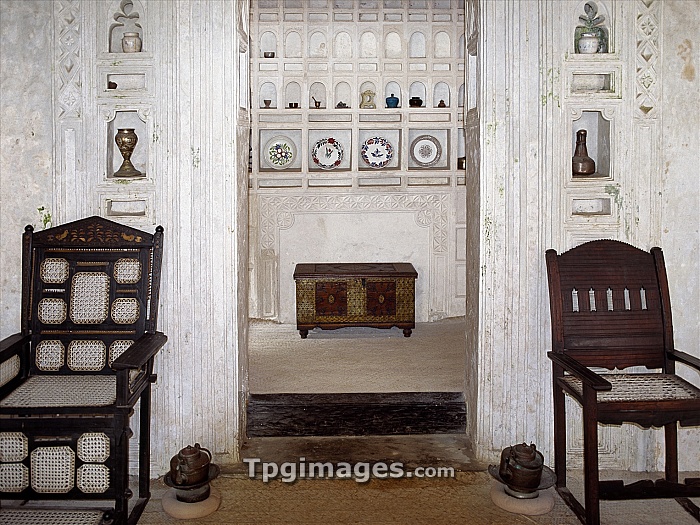
A fine example of the interior of a traditional Swahili house in Lamu Town. The extraordinary skill of the local craftsmen is an important legacy of Afro-Arab architecture in the Swahili style. Most of the finest standing examples of traditional double-storied stone houses in Lamu and nearby Pate Island date from the eighteenth century onwards. The decorative plasterwork and numerous arched, rectangular niches of this house are typical of the old style. The scale and regularity of the niches is said to increase sound absorption and enlarge one's visual and aural perception of rather narrow high spaces. Most of the niches have undercut sections so that their size does not seem to diminish from front to rear, an intentional way of falsifying the perspective. The ornate armed chairs come from Pate Island. Situated 150 miles north-northeast of Mombasa, Lamu town dates from the 15th century AD. The island's importance lies in the fact that it has the only certain source of sweet groundwater in the entire district. The town was declared a World Heritage Site by UNESCO in 2001 because it is the oldest and best preserved Swahili settlement in East Africa. Moreover, its architecture and urban development graphically demonstrates the diverse cultural influences that came together over many centuries to produce a distinctively local Swahili style and culture.
| px | px | dpi | = | cm | x | cm | = | MB |
Details
Creative#:
TOP06633509
Source:
達志影像
Authorization Type:
RM
Release Information:
須由TPG 完整授權
Model Release:
NO
Property Release:
NO
Right to Privacy:
No
Same folder images:

 Loading
Loading